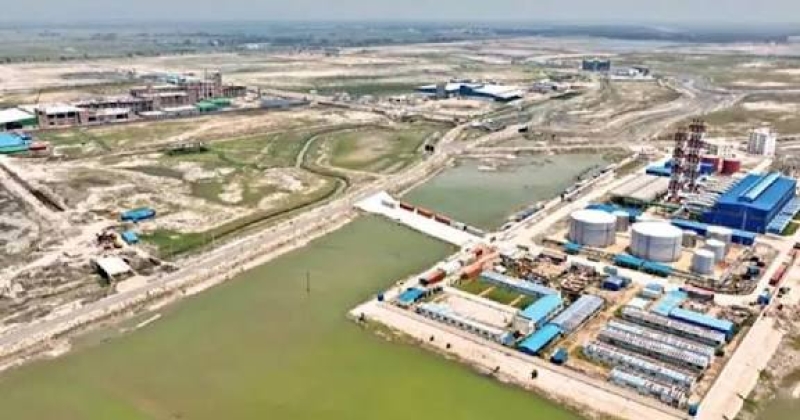- New Law to Fully Protect 93 pc of Bank Depositors |
- Nationwide Typhoid Vaccination Drive Begins for Children |
- Chittagong Port Tariff Surge Set to Raise Prices of Goods |
- Rangpur’s 550km roads turn hazardous amid years of neglect |
- BNP backs fair trials for army members accused of wrongdoing |
Govt to Link Economic Zones by Rail, Starting Mirsarai

The government has undertaken a major initiative to establish railway connectivity with all economic zones (EZs) across the country, including the National Special Economic Zone in Chattogram’s Mirsarai, to make goods transportation faster, cheaper and more efficient.
“We are preparing an integrated plan for all economic zones in the country with focus on Mirsarai. Our goal is to connect each economic zone directly to railway lines to facilitate smooth goods transportation,” said Sheikh Moinuddin, Chief Adviser’s Special Assistant on the Ministry of Road Transport and Bridges and the Ministry of Railways.
“Currently, goods have to be transported by trucks to reach the train. We want to ensure that containers or goods can be loaded directly onto trains from all economic zones. This will save both time and cost while also making industrial operations more efficient,” he added.
According to officials, a comprehensive master plan is being prepared to link all economic zones directly with the country’s railway, road and port networks. “This will add a new dimension to the national transport system,” Sheikh Moinuddin said.
Once implemented, he said, the initiative would significantly strengthen Bangladesh’s industrialisation drive, boost exports and improve the overall goods transportation system.
Bangladesh has been developing economic zones to accelerate industrial growth, attract foreign direct investment (FDI) and create large-scale employment opportunities.
The previous government set an ambitious target to establish 100 economic zones by 2025, but the current administration is prioritising the development of five fully operational EZs to ensure effective delivery.
The Bangladesh Economic Zones Authority (BEZA) has already prepared a two-year roadmap to make these five zones fully functional.
BEZA Executive Chairman Chowdhury Ashik Mahmud Bin announced earlier this year that the zones are expected to attract $5.5 billion in investment and create over 200,000 jobs.
The five targeted zones are:
· National Special Economic Zone in Chattogram, Mirsarai
· Sylhet Economic Zone
· Jamalpur Economic Zone
· Maheshkhali Economic Zone
· Japanese Economic Zone
Among these, the National Special Economic Zone in Chattogram stands out as the largest public sector EZ. Spread over 30,000 acres of land across Mirsarai, Sonagazi and Sitakunda upazilas, and this planned and modern industrial hub is poised to play a pivotal role in driving the country’s industrialisation efforts, reports BSS.
Experts say establishing direct rail connectivity to Mirsarai’s economic zone will be crucial for seamless movement of raw materials and finished goods to ports and markets, further enhancing its attractiveness to both local and foreign investors.

